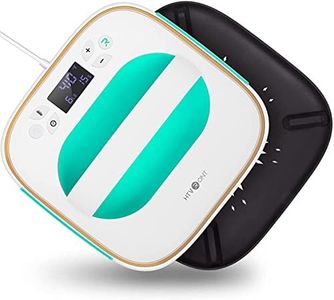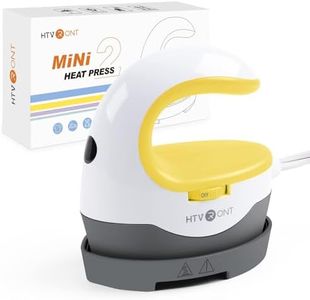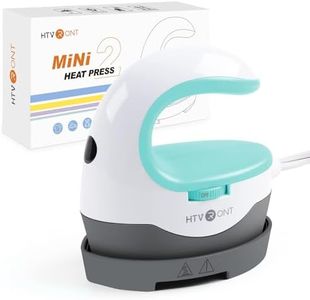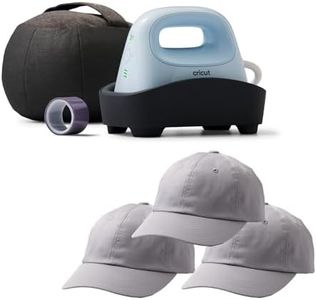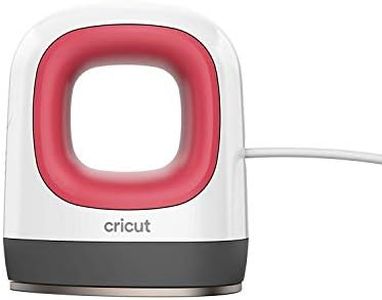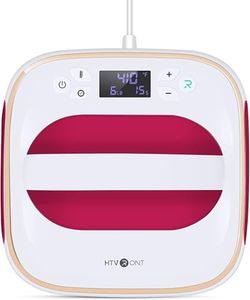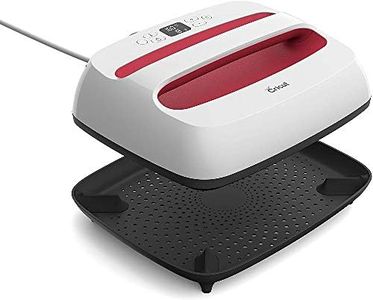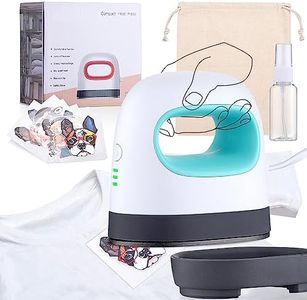We Use CookiesWe use cookies to enhance the security, performance,
functionality and for analytical and promotional activities. By continuing to browse this site you
are agreeing to our privacy policy
10 Best Heat Presses
From leading brands and best sellers available on the web.Buying Guide for the Best Heat Presses
Choosing the right heat press is crucial for anyone looking to create custom apparel, mugs, or other fabric and hard surface items. Whether you're starting a new business, picking up a hobby, or upgrading your workshop, understanding the main features of heat presses will help you find a model that matches your needs, workspace, and project ambitions. Focus on what you plan to make most often, how much space you have, and how easy the machine is to use for your skill level.Type of Heat PressThe type of heat press refers to how the machine opens and operates. Common types include clamshell (opens like a clamshell), swing-away (top plate swings to the side), and draw (lower platen pulls out). Clamshells are compact and simple, making them great for beginners or small spaces. Swing-away models offer more clearance, which is safer and ideal for thicker items, but need more space to operate. Draw presses allow you to move the base, making placement easier but also require more room. Your choice should be based on your workspace and the items you'll be pressing most often.
Size of Platen (Heat Plate)The platen size determines the maximum area you can press in one go. Smaller platens (around 9"x12" or 12"x15") work for t-shirts, baby clothes, or small items, and are easier to handle in compact spaces. Medium sizes balance versatility and practicality for most users. Larger platens (16"x20" and up) are ideal for bigger garments, larger designs, or batch production but will take up more space and require more strength to operate. Pick based on the typical size of your projects.
Temperature Range and AccuracyThe temperature range tells you the hottest the machine can get and how precisely it maintains heat. Some materials, like sublimation blanks or certain vinyls, need very specific temperatures. Machines that heat up quickly and keep temperature stable will give you consistent, quality results. For standard t-shirts and vinyl, lower ranges will suffice, but if you plan to do a variety of projects, choose a press with a wide, adjustable temperature range and reliable accuracy.
Pressure AdjustmentPressure adjustment lets you control how firmly the press closes on your project. Proper pressure ensures even transfers, prevents scorching, and accommodates different material thicknesses. Light pressure is good for thin fabrics while heavy pressure is needed for thicker items like sweatshirts or mousepads. Look for a machine with simple, accessible pressure controls. If you plan to press a wide range of items, easy and precise adjustment will be important.
Timer and Digital ControlsTiming is important for heat transfer quality; too short or too long can ruin a project. A built-in timer lets you set exactly how long the press stays down, and digital controls make it easy to repeat the same settings. Simple machines may use manual timers or dials, while advanced ones have digital displays and programmable presets. If you value convenience or need to do repetitive jobs, digital controls and timers will improve your workflow.
Portability and Build QualityThe weight and build of a heat press affect how easy it is to move and how long it will last. Lighter presses are portable and good for occasional or event-based use, but may not hold up to high-volume projects. Heavier, sturdier models are best for daily or commercial use. The build should be stable, and materials like steel will last longer. If you need to move the press often or have very limited space, consider size and portability; if it will stay in a dedicated spot, you can prioritize durability.
Versatility (Attachments and Functions)Some presses come as multi-use machines with attachments for mugs, hats, or plates, not just flat garments. This makes them versatile and great for experimenting or for businesses that want to offer a wide product range. Single-function presses are simpler and might be better if you only plan to do standard transfers. Choose based on your creativity needs and future plans; if you want options, look for multi-attachment models.




